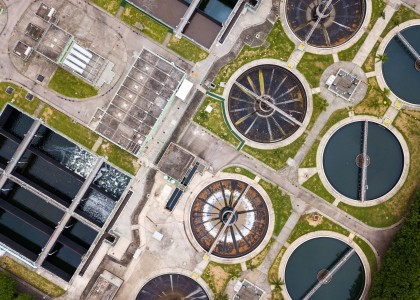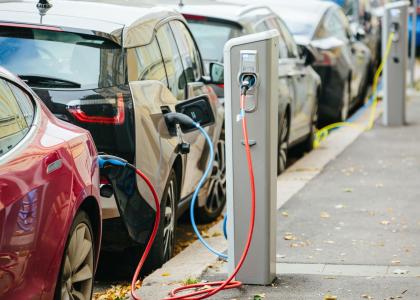More states are enacting laws to promote electric vehicles as well as wind and solar energy. Washington State passed legislation prohibiting the sale of automobiles with internal combustion engines beginning with model year 2030. Other states are pushing to decarbonize buildings, notably with heat pumps, as part of comprehensive legislation that considers impacts on energy efficiency, the power grid, and natural gas pipes.
Massachusetts Governor Charlie Baker (R) signed sweeping climate legislation on August 11 to expand offshore wind energy, prohibit the sale of internal combustion engine automobiles after 2035, and put restrictions on natural gas in newly constructed buildings. Maryland and New York also passed laws this year to begin the transition away from on-site combustion of fossil fuels for building heat, which accounts for about 29% of total U.S. greenhouse gas emissions.
Decarbonizing building heating systems will require greater efficiency for new and existing buildings, including net-zero building codes and beneficial electrification. Renewable thermal energy—such as ground-source heat pumps—will also be needed, along with grid infrastructure investments for greater reliability and deployment of small renewable energy generation and storage technologies, known as distributed energy resources.
Energy efficiency will be key to limiting electricity demand as buildings shift from natural gas to electric heat pumps for both space and water heating. Right-sized electricity demand will, in turn, help policymakers and regulators better plan and coordinate electrical grid and natural gas pipe investments for an affordable energy delivery system.
Massachusetts is taking steps to plan these energy investments. Its new law, “An Act driving clean energy and offshore wind,” requires greater building efficiency, including mandatory energy usage reporting for buildings larger than 20,000 square feet, which is the necessary first step to implement a building performance standard in the future. Passed by the state legislature on July 31, the law requires utilities to submit plans for improving transmission and distribution systems so the grid can be more reliable and resilient while accommodating the shift to renewable generation.
Massachusetts will allow municipalities to begin pilot programs that may prohibit the use of fossil fuels in new buildings. Expecting a shift away from gas, starting in 2025, Massachusetts will eliminate incentives for new fossil-fuel equipment, except as a backup thermal energy source for heat pumps. The state will also offer research and grants to promote the use of ground-source heat pump systems, which take advantage of more consistent underground temperatures, making them more efficient than air-source heat pumps.
Maryland’s Climate Solutions Now Act, passed in April, focuses on energy efficiency in its building decarbonization efforts. The state’s new building energy performance standard will require owners of inefficient buildings to make upgrades. The standard covers buildings larger than 35,000 square feet and is projected to reduce emissions 20% by 2030. The law also increases Maryland’s annual savings target for its utility-run energy efficiency program and establishes a statewide greenhouse gas savings target, which will encourage beneficial building electrification as an efficiency measure. To prepare for greater reliance on decarbonized heat in the future, Maryland’s law calls for a planning study for gas and electric companies to serve customers under a managed transition to a highly electrified building sector.
Though slightly less comprehensive than Massachusetts and Maryland in terms of heating decarbonization, New York’s recently enacted law requires greater efficiency in appliance standards and energy savings through strengthened building codes. The building and appliance standards are estimated to save New Yorkers $800 million annually on utility bills by 2025, rising to $1.3 billion per year by 2030, according to a report prepared by the New York State Energy Research and Development Authority. To offer an alternative to fossil-fuel heating systems fueled by natural gas, heating oil, or propane, another New York law allows utilities to own and operate thermal energy networks with regulatory oversight, similar to the networked geothermal energy systems that Massachusetts is considering. New York’s law will ensure progress toward the state’s 2025 energy efficiency target of reducing on-site energy consumption by 185 trillion British thermal units.
Massachusetts, Maryland, and New York are not the only states to approve clean energy legislation this year. The District of Columbia passed a law mandating a net-zero building code, which requires highly efficient building designs that use renewable energy. Other climate-leading states such as Colorado, Connecticut, Minnesota, and Washington also recently passed significant clean energy laws, each of which will make meaningful progress toward reducing the nation's greenhouse gas emissions.
The Inflation Reduction Act, signed into law by President Biden last week, incentivizes building decarbonization, providing $9 billion for states to issue rebates to homeowners for whole-home retrofits and for heat pumps for space and water heating. As states look to harness resources from the federal government, policymakers and regulators should seek holistic approaches to beneficial electrification and building decarbonization to reduce energy use and greenhouse gas emissions.




